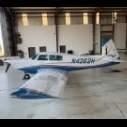Mooney Missile CG
-
Members Online
- larryb
- ZuluZulu
- Larry
- Guy123
- Neshi
- FlyingDude
- IvanP
- Fly Boomer
- Niko182
- UteM20F
- warbingtonmasonry
- Max3293F
- M Terry
- 7.Mooney.Driver.0
- jrwilson
- DanM20C
- DC2
- colinzp
- ckb
- BillC
- TheAv8r
- catchman86
- 47U
- JB2000
- gamefreak32
- lithium366
- takair
- Rsmithref
- mooney17n
- Jake@BevanAviation
- WBEL
- natdm
- Mike Will Fly It
- dan nephin
- Lax291
- Joseph Lepore
- M20S Driver
- OSUAV8TER
- Ned Gravel


Recommended Posts
Join the conversation
You can post now and register later. If you have an account, sign in now to post with your account.